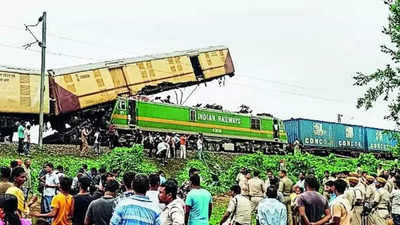- News
- City News
- delhi News
- Kanchanjungha Express crash: ‘Not following rule’ by goods train driver could have led to crash: Railway ‘joint report’
Trending
Kanchanjungha Express crash: ‘Not following rule’ by goods train driver could have led to crash: Railway ‘joint report’
A 'joint observation report' suggests that the fatal train accident may have been caused by the loco pilot of the goods train flouting rules and excessive speeding. The Commissioner of Railway Safety will conduct a detailed probe to determine the exact reason.

Joint observation report in any accident is based on preliminary findings by officials from different departments of railways who visit the site soon after a mishap. In this case, there were officials from engineering, signaling, mechanical and traffic department and the CLI.
The engineers in their report said that after the on site observation they came to "conclusion that rear end dashing of 13174 DN (read Kanchanjungha Express) by DN GFCJ container (goods train) and ultimately derailment of coaches and container wagon may have occurred due to not following the rule to passing under Automatic Signal at danger position and also excessive speed of train no DN GFCJ container."
The report, which was submitted a day after the accident, also mentioned that the loco pilot, assistant loco pilot and train manager of the goods train were responsible for the accident.
In his dissent note, the CLI said he doesn't agree there was failure of all automatic/ semi-automatic signals between Ranipatra (RNI) and Chattar Hat Junction (CAT). He mentioned that the signals had not been working since 5.50am on the day of the accident. He wrote that in such a situation, the whole section (between RNI and CAT) should have been converted into an Absolute Block System - a system to allow only one train at a time between two stations.
End of Article
FOLLOW US ON SOCIAL MEDIA










